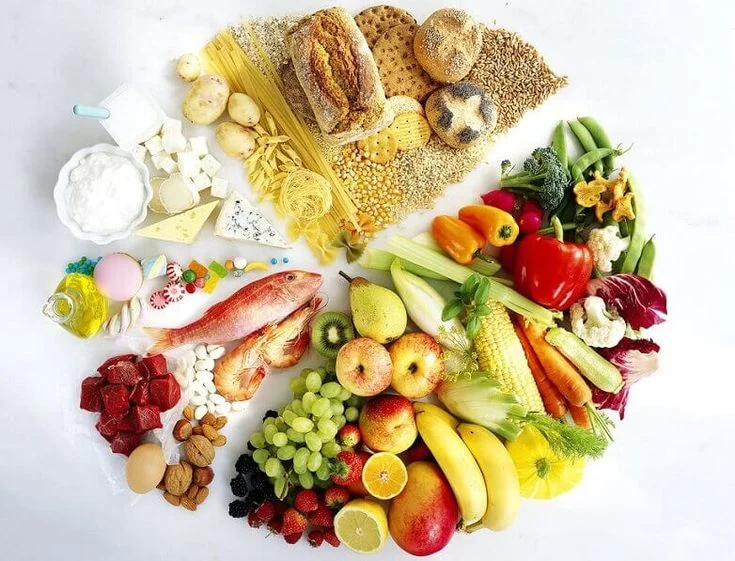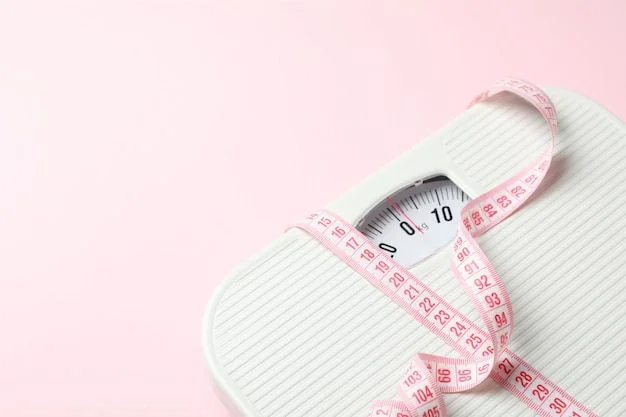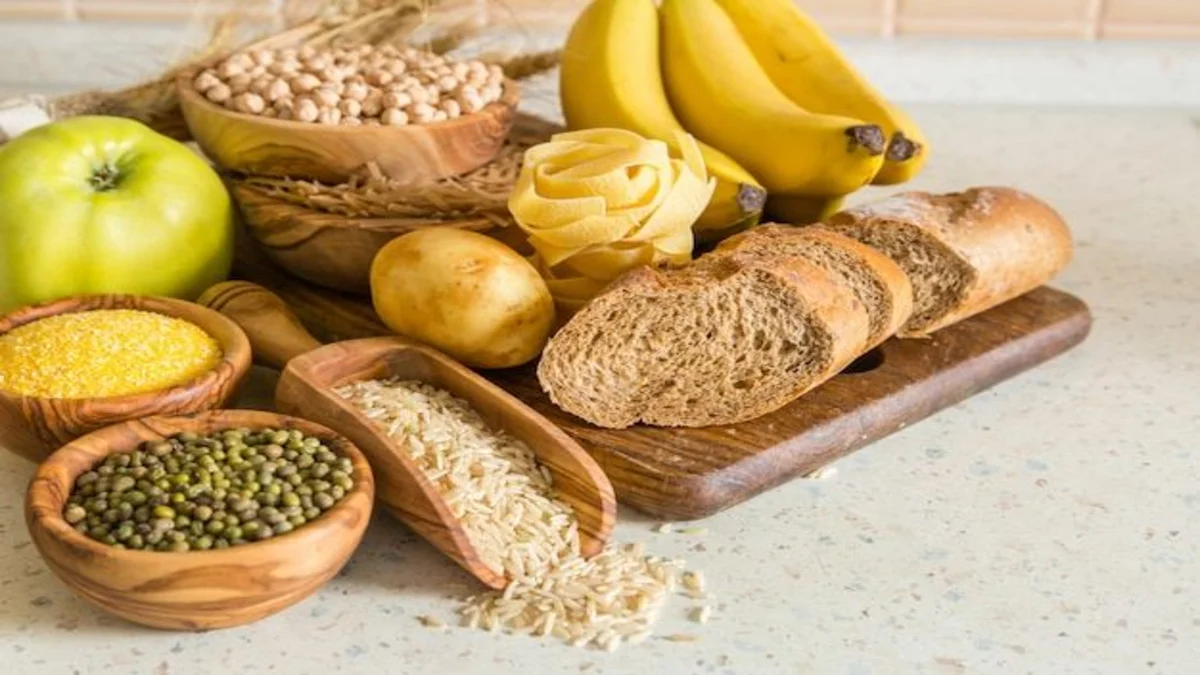The popular “Dash Diet For Weight Loss” is a simple, practical approach that has been shown to be successful in studies. The Dash Diet forces you to consume a small amount of protein and carbs every day to help you burn calories and lose weight.
There are several benefits to following the Dash Diet For Weight Loss. First, it may help you lose weight quickly and safely. Second, it’s simple and easy to follow even if you don’t have time to cook from scratch every day. Finally, the Dash Diet is affordable you can get results without spending a lot of money on specialty foods or dietary supplements.
What Is the Dash Diet For Weight Loss?
Dietary Approaches to Stop Hypertension is referred to as DASH. The purpose of this diet plan is to reduce the risk of hypertension, or high blood pressure. One in three adult Americans suffers from high blood pressure, which is a significant risk factor for heart disease.
The DASH diet increases your intake of potassium, a mineral that is good for your heart. Additionally, you eat less sodium, which can help lower blood pressure and strengthen the heart.
Benefits of Dash Diet For Weight Loss
- Effective Weight Loss: Lose weight with a tried-and-true method.
- Heart Health Boost: Promotes healthy cardiovascular function.
- Reduce Blood Pressure: DASH helps to treat high blood pressure.
- Eat a varied, nutrient-rich diet to maintain balanced nutrition.
- Sustainable Lifestyle Change: A long-term approach to controlling weight.
- Lower Diabetes Risk: Assists in blood sugar regulation.
- Better Digestive Health: Promotes gut health.
- Enhance Energy: Experience daily renewal and vigor.
- Reduced Cholesterol: Assists in maintaining a lipid profile that is healthy.
- Delectable and Diverse Meals: Savor savory, filling cuisine.
How Does the Dash Diet Help With Weight Loss?

The DASH (Dietary Approaches to Stop Hypertension) Diet uses multiple important pathways to promote weight loss.
- Portion control: Places emphasis on sensible serving sizes to help people avoid overindulging.
- Nutrient-rich foods: Emphasis on whole, nourishing foods that are high in nutrients.
- Decreased Sodium Intake: This helps with heart health and weight loss by consuming less salt.
- Provides a balance of complex carbohydrates, healthy fats, and proteins. This is known as balanced macronutrients.
- Improve Fiber: Foods high in fiber encourage fullness, which lowers total caloric consumption.
- Reduced Sugar Consumption: Helps with weight management by consuming fewer added sugars.
- Encourages Healthy Habits: Supports consistent physical activity and generally well-balanced lifestyle decisions.
- Controls Blood Pressure: Addresses hypertension, which is frequently linked to being overweight.
- Scientific Basis: Based on studies showing weight loss to be successful.
- Integrating a lifestyle: Designed for long-term commitment, it encourages steady weight loss.
Does the Dash Diet Help People Lose Weight?

Indeed, Dr. Lee says. “A meta-analysis comparing DASH with other low-energy diets was published in Obesity Reviews in 2016, and the results showed that DASH was statistically significantly beneficial for weight loss,” the author states.
Compared to individuals on other diets, DASH dieters dropped about 3.1 pounds over eight to 24 weeks, 0.4 BMI units from eight to 52 weeks, and 0.4 inches more in waist circumference over 24 weeks. When compared to typical Western diets, the impact of the diet was higher in individuals who were overweight or obese.
These can appear to be minor variations. However, maintaining weight reduction over time and continuing to lose weight is one of the most important aspects of weight loss. After up to a year of adhering to the DASH diet, these modifications were observed.
what do you eat in the first 2 weeks of the dash diet for weight loss?

- Fruits: Add a selection of fruits, including bananas, apples, oranges, and berries. Try to have several servings each day.
- Vegetables: Eat a variety of vibrant veggies, such as bell peppers, broccoli, carrots, and leafy greens. Try to have several servings each day.
- Whole Grains: Opt for whole grains such as whole wheat bread, quinoa, brown rice, and oats. These support fullness while offering minerals and fiber.
- Lean Proteins: Choose low-fat dairy products, fish, chicken, beans, lentils, and tofu as your lean protein sources. Add fish that are high in omega-3 fatty acids, such as trout and salmon.
- Nuts and Seeds: Snackle on tiny servings of almonds, walnuts, chia seeds, and flaxseeds, among other nuts and seeds. These can make a filling snack and include healthy fats.
- Dairy: For an excellent supply of calcium and protein, including low-fat or fat-free dairy products such as milk, yogurt, and cheese.
- Heart-healthy Fats: In moderation, use heart-healthy fats such as avocados, canola oil, and olive oil.
- Limit Sodium: Choose fresh, whole foods, stay away from processed foods, and use herbs and spices for flavor to lower your sodium intake.
- Moderate Sweets: Cut back on sweets and extra sugars. If you have a sweet tooth, go for naturally sweet meals like fruits in modest portions.
- Portion Control: To control calorie consumption and aid in weight loss, pay attention to portion sizes.
Sample Menu for One Week
Monday
- Breakfast consists of 1/2 cup (75 grams) of blueberries, 1/2 cup (240 ml) of skim milk, and 1/2 cup (90 grams) of oatmeal with fresh orange juice.
- Snack: 1 cup (285 grams) of low-fat yogurt and 1 medium apple.
- Lunch consists of a tuna and mayonnaise sandwich cooked with two whole-grain bread slices, 1.5 cups (113 grams) of green salad, 1 tablespoon (15 grams) of mayonnaise, and 3 ounces (80 grams) of canned tuna.
- 1 medium banana as a snack.
- Dinner consists of 1/2 cup (75 grams) of carrots and broccoli combined with 3 ounces (85 grams) of lean chicken breast cooked in 1 teaspoon (5 ml) of vegetable oil. Accompanied by 190 grams (1 cup) of brown rice.
Tuesday
- For breakfast, have one medium apple, one tablespoon (20 grams) of jelly or jam, two slices of whole-wheat toast, one teaspoon (4.5 grams) of margarine, and half a cup (120 ml) of fresh orange juice.
- One medium banana is the snack.
- Lunch consists of 1 cup (190 grams) of brown rice, 1.5 ounces (45 grams) of low-fat cheese, and 3 ounces (85 grams) of lean chicken breast served with 2 cups (150 grams) of green salad.
- One cup (285 grams) of low-fat yogurt and half a cup (30 grams) of canned peaches make a snack.
- The supper consists of 3 ounces (85 grams) of cooked salmon with 1 cup (300 grams) of boiled potatoes and 1.5 cups (225 grams) of boiled veggies, all in 1 teaspoon (5 ml) of vegetable oil.
Wednesday
- Breakfast consists of 1/2 cup (75 grams) of blueberries, 1 cup (240 ml) of skim milk, and 1 cup (90 grams) of oats. 120 milliliters, or 1/2 cup, fresh orange juice.
- 1 medium orange as a snack.
- Two whole-wheat bread pieces, three ounces (85 grams) of lean turkey, 1.5 ounces (45 grams) of low-fat cheese, half a cup (38 grams) of green salad, and half a cup (38 grams) of cherry tomatoes make up lunch.
- Snack: 1/2 cup (75 grams) of canned pineapple and four whole-grain crackers topped with 1.5 ounces (45 grams) of cottage cheese.
- Dinner consists of 1 cup (200 grams) of mashed potatoes, 1/2 cup (75 grams) of green peas, 1/2 cup (75 grams) of broccoli, and 6 ounces (170 grams) of cod fillet.
Thursday
- Breakfast consists of 1/2 cup (75 grams) of strawberries, 1 cup (240 ml) of skim milk, and 1 cup (90 grams) of oats. 120 milliliters, or 1/2 cup, fresh orange juice.
- 1 medium banana as a snack.
- Lunch consists of a salad with 2 cups (152 grams) of green salad, 1/2 cup (38 grams) of cherry tomatoes, 4.5 ounces (130 grams) of grilled tuna, 1 cooked egg, and 2 teaspoons (30 ml) of low-fat dressing.
- Snack: 1 cup (285 grams) of low-fat yogurt and 1/2 cup (30 grams) of canned pears.
- Dinner consists of 1 cup (150 grams) of mixed veggies, 1 cup (190 grams) of brown rice, and 3 ounces (85 grams) of pork fillet.
Friday
- Two cooked eggs, two turkey bacon slices with half a cup (38 grams) of cherry tomatoes, half a cup (80 grams) of baked beans, two pieces of whole-wheat toast, and half a cup (120 ml) of fresh orange juice comprise the breakfast.
- 1 medium apple for a snack.
- Lunch consists of 1/2 cup (38 grams) of salad greens, 1/2 cup (38 grams) of cherry tomatoes, 1.5 ounces (45 grams) of low-fat cheese, and 2 pieces of whole-wheat toast.
- A cup of fruit salad for a snack.
- Dinner is 4 ounces (115 grams) of minced turkey and 1 cup (190 grams) of spaghetti and meatballs. Green peas, 1/2 cup (75 grams), served side by side.
Saturday
- Breakfast consists of 1/2 cup (120 ml) of fresh orange juice, 1 medium banana, 2 tablespoons (16 grams) of mixed seeds, and 2 pieces of whole-wheat toast with peanut butter.
- 1 medium apple for a snack.
- Lunch consists of 1 cup (150 grams) of roasted veggies, 3 ounces (85 grams) of grilled chicken, and 1 cup (190 grams) of couscous.
- Snack: 1 cup (285 grams) of low-fat yogurt and 1/2 cup (30 grams) of mixed berries.
- Dinner consists of 1.5 ounces (45 grams) of low-fat cheese, 1 cup (150 grams) of ratatouille, 1 cup (190 grams) of brown rice, and 3 ounces (85 grams) of pork steak.
- Dessert: Chocolate pudding with less fat.
Sunday
- A cup (90 grams) of oats, one cup (240 ml) of skim milk, half a cup (75 grams) of blueberries, and half a cup (120 ml) of freshly squeezed orange juice are on the breakfast menu.
- 1 medium pear as a snack.
- Lunch consists of 2 cups (150 grams) of green salad, 1/2 cup (75 grams) of cherry tomatoes, 1/2 tablespoon (4 grams) of seeds, 4 whole-grain crackers, and 3 ounces (85 grams) of lean chicken breast.
- Snack: 1/2 cup (70 grams) almonds and one banana.
- Dinner consists of 3 ounces of roast beef, 1/2 cup (75 grams) of broccoli, 1/2 cup (150 grams) of cooked potatoes, and 1/2 cup (75 grams) of green peas.
The Bottom Line
Blood pressure can be lowered quickly and effectively with the dash diet for weight loss.
Though it can lower blood pressure, bear in mind that reducing daily salt intake to 3/4 teaspoon (1,500 mg) or less has not been associated with any concrete health benefits, such as a lower risk of heart disease.
Furthermore, the typical low-fat diet, which has not been demonstrated in large controlled trials to lower the risk of death from heart disease, is very comparable to the DASH diet for weight loss.
People in good health might not really need to adhere to this diet. However, dash might be an excellent option for you if you have high blood pressure or believe you might be sensitive to salt.





